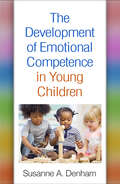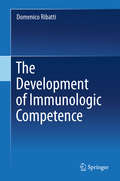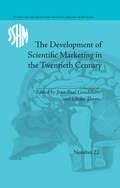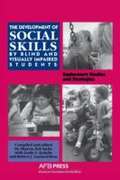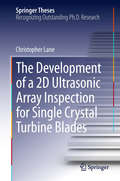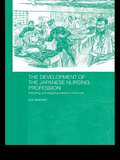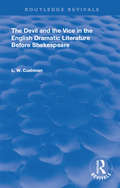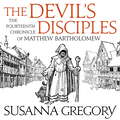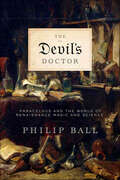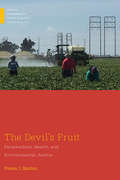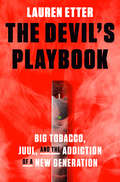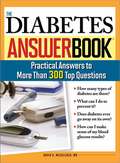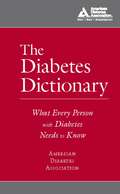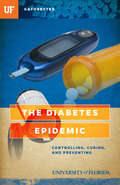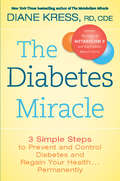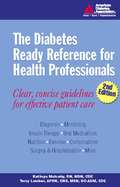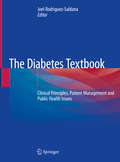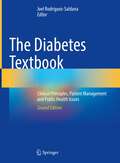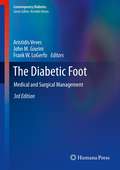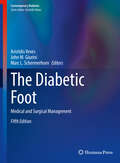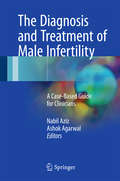- Table View
- List View
The Development of Emotional Competence in Young Children
by Susanne A. DenhamThis engaging, authoritative text synthesizes a vast body of research on how young children develop the ability to understand, express, and manage their emotions, as well as the impact of these capacities on relationships, school readiness, and overall well-being. Illustrated with vivid vignettes, the book explains specific ways that parents, teachers, and education systems can foster or hinder emotional competence, and reviews relevant assessments and interventions. Compelling topics include emotion regulation as both product and process, cultural variations in emotion socialization, the expression of empathy and self-conscious emotions, risk factors for delays in emotional development, and connections between emotional competence and social–emotional learning (SEL). Almost entirely new, this book replaces Susanne A. Denham's influential earlier work, Emotional Development in Young Children.
The Development of Immunologic Competence
by Domenico RibattiThis book traces significant aspects of the history of immunology, exploring the immune system and immunodeficiency. The author recounts human hematopoietic development, and how a distinction of the immune system into thymus-dependent and thymus-independent components has been demonstrated in different animal species, including amphibians, birds, and mammals. Other themes explored in this book include discoveries about the role of the thymus of the Bursa of Fabricius in the development of immunologic competence, and observations on the changes in the lymphoid organs after bursectomy and thymectomy in chickens. Readers will discover how the bursa provides a unique microenvironment for the proliferation and differentiation of B cells, while thymectomized and irradiated animals were deficient in lymphocytes that mediated inflammatory responses, as assessed by skin graft rejection, delayed-type hypersensitivity, and graft versus host reaction. A clear perspective for understanding several diseases and also the entire lymphoid system emerges through the experiments and extensive histopathological studies of patients with primary immunodeficiency diseases that are described in these chapters. Researchers in the life sciences, in biomedicine and the history of medicine will all find something of value in this highly engaging work. It will also appeal to those with an interest in public health and neurobiology.
The Development of Scientific Marketing in the Twentieth Century: Research for Sales in the Pharmaceutical Industry (Studies for the Society for the Social History of Medicine #22)
by Jean-Paul GaudilliereThe global pharmaceutical industry is currently estimated to be worth $1 trillion. Contributors chart the rise of scientific marketing within the industry from 1920-1980. This is the first comprehensive study into pharmaceutical marketing, demonstrating that many new techniques were actually developed in Europe before being exported to America.
The Development of Social Skills by Blind and Visually Impaired Students: Exploratory Studies and Strategies
by Sharon Zell Sacks Linda S. Kekelis Robert J. Gaylord-RossThe book, using an ethnographic approach, outlines the theoretical background of social-skills development, presents case studies and suggests guidelines for helping Blind and Visually Impaired children shape those encounters into satisfying ones.
The Development of a 2D Ultrasonic Array Inspection for Single Crystal Turbine Blades
by Christopher LaneThis thesis describes the development of a new technique to solve an important industrial inspection requirement for a high-value jet-engine component. The work - and the story told in the thesis - stretches all the way from the fundamentals of wave propagation in anisotropic material and ultrasonic array imaging through to device production and site trials. The book includes a description of a new method to determine crystallographic orientation from 2D ultrasonic array data. Another new method is described that enables volumetric images of an anisotropic material to be generated from 2D ultrasonic array data, based on measured crystallographic orientation. After extensive modeling, a suitable 2D array and deployment fixtures were manufactured and tested on in situ turbine blades in real engines. The final site trial indicated an order of magnitude improvement over the best existing technique in the detectability of a certain type of root cracking. The Development of a 2D Ultrasonic Array Inspection for Single Crystal Turbine Blades should be an inspiration for those starting out on doctoral degrees as it shows the complete development cycle from basic science to industrial usage.
The Development of the Japanese Nursing Profession: Adopting and Adapting Western Influences (Routledge Studies in the Modern History of Asia #Vol. 15)
by Aya TakahashiIn the years after 1868, when Japan's long period of self-imposed isolation ended, in nursing, as in every other aspect of life, the Japanese looked to the west. This book tells the story of 'Florence Nightingale-ism' in Japan, showing how Japanese nursing developed from 1868 to the present. It discusses how Japanese nursing adopted western models, implementing 'Nightingale-ism' in a conscious, caricature way, and implemented it more fully, at least on the surface, than in Britain. At the same time Japanese nurses had to cope, with great difficulty, with traditional Japanese attitudes, which were strongly opposed to women being involved in professions of any kind, and, as the book shows, western models did not in fact penetrate very deeply.
The Devil and the Vice in the English Dramatic Literature Before Shakespeare (Routledge Revivals)
by L. W. CushmanOriginally published in 1900, this book was the first investigation of the devil and the Vice as dramatic figures, and a study of these figures led to a new view of the subject: it is, in brief, that the appearance of the devil in the non-dramatic as well as in the dramatic literature is limited to a definite range. As a dramatic figure the devil falls more and more into the background and the Vice is distinct in origin and function from the devil.
The Devil's Bones
by Jefferson BassA burned car sits on a Tennessee hilltop, a woman's lifeless, charred body seated inside. Forensic anthropologist Bill Brockton's job is to discover the truth hidden in the fire-desecrated corpse. Was the woman's death accidental . . . or was she incinerated to cover up her murder?But his research into the effect of flame on flesh and bone is about to collide with reality like a lit match meeting spilled gasoline. The arrival of a mysterious package--a set of suspiciously unnatural cremated remains--is pulling Brockton toward a nightmare too inhuman to imagine. And an old nemesis is waiting in the shadows to put him to the ultimate test, one that could reduce Brockton's life to smoldering ruins.
The Devil's Bones (Body Farm #3)
by Jefferson BassA burned car sits on a Tennessee hilltop, a woman's lifeless, charred body seated inside. Forensic anthropologist Bill Brockton's job is to discover the truth hidden in the fire-desecrated corpse. Was the woman's death accidental . . . or was she incinerated to cover up her murder? But his research into the effect of flame on flesh and bone is about to collide with reality like a lit match meeting spilled gasoline. The arrival of a mysterious package--a set of suspiciously unnatural cremated remains--is pulling Brockton toward a nightmare too inhuman to imagine. And an old nemesis is waiting in the shadows to put him to the ultimate test, one that could reduce Brockton's life to smoldering ruins.
The Devil's Disciples: The Fourteenth Chronicle of Matthew Bartholomew (Chronicles of Matthew Bartholomew #14)
by Susanna GregoryFor the twentieth anniversary of the start of the Matthew Bartholomew series, Sphere is delighted to reissue all of the medieval monk's cases with beautiful new series-style covers.------------------------------------The winter of 1353 has been appallingly wet, there is a fever outbreak amongst the poorer townspeople and the country is not yet fully recovered from the aftermath of the plague. The increasing reputation and wealth of the Cambridge colleges are causing dangerous tensions between the town, Church and University. Matthew Bartholomew is called to look into the deaths of three members of the University of who died from drinking poisoned wine, and soon he stumbles upon criminal activities that implicate his relatives, friends and colleagues - so he must solve the case before matters in the town get out of hand...Rumours of plague threaten Cambridge again, ten years after the Black Death had almost laid waste to the town. Neither the church nor its priests had defended people from the disease and now they turn elsewhere for protection, to pagan ritual and magical potions. It is a ripe atmosphere to be exploited by the mysterious 'Sorcerer', an anonymous magician whose increasing influence seems certain to oust both civil and church leaders from power. One murder, another unexplained death, a font filled with blood, a desecreated grave - all bear the hallmarks of the Sorcerer's hand, only the identity of the magician remains a mystery. One which Matthew Barthlomew must quickly get to the bottom of in order for he and his University colleagues to be free from danger...
The Devil's Disciples: The Fourteenth Chronicle of Matthew Bartholomew (Chronicles of Matthew Bartholomew #14)
by Susanna GregoryRumours of plague threaten Cambridge again, ten years after the Black Death had almost laid waste to the town. Neither the church nor its priests had defended people from the disease and now they turn elsewhere for protection, to pagan ritual and magical potions. It is a ripe atmosphere to be exploited by the mysterious 'Sorcerer', an anonymous magician whose increasing influence seems certain to oust both civil and church leaders from power. One murder, another unexplained death, a font filled with blood, a desecreated grave - all bear the hallmarks of the Sorcerer's hand, only the identity of the magician remains a mystery. A mystery which Matthew Barthlomew must solve before he loses his reputation ... and his life.
The Devil's Doctor: Paracelsus and the World of Renaissance Magic and Science
by Philip Ball“A vibrant, original portrait of a man of contradictions,” the Renaissance-era Swiss father of modern medicine (Publishers Weekly, starred review).Philippus Aureolus Theophrastus Bombast von Hohenheim, who called himself Paracelsus, stands at the cusp of medieval and modern times. A contemporary of Luther, an enemy of the medical establishment, a scourge of the universities, an alchemist, an army surgeon, and a radical theologian, he attracted myths even before he died. His fantastic journeys across Europe and beyond were said to be made on a magical white horse, and he was rumored to carry the elixir of life in the pommel of his great broadsword. His name was linked with Faust, who bargained with the devil.Who was the man behind these stories? Some have accused him of being a charlatan, a windbag who filled his books with wild speculations and invented words. Others claim him to be the father of modern medicine. Philip Ball exposes a more complex truth in The Devil’s Doctor—one that emerges only by entering Paracelsus’s time. He explores the intellectual, political, and religious undercurrents of the sixteenth century and looks at how doctors really practiced, at how people traveled, and at how wars were fought. For Paracelsus was a product of an age of change and strife, of renaissance and reformation. And yet by uniting the diverse disciplines of medicine, biology, and alchemy, he assisted, almost despite himself, in the birth of science and the emergence of the age of rationalism.Praise for The Devil’s Doctor“An enlivening portrait that will spark interest in [Paracelsus’s] role in the rise of science.” —Booklist“A true iconoclast, [Paraclesus] inhabited an ideological landscape somewhere between the medieval and the modern. Ball effectively places Paracelsus in the larger context of Renaissance magic and philosophy, and of a turbulent period. . . . Worth the effort.” —Kirkus Reviews
The Devil's Fruit: Farmworkers, Health, and Environmental Justice (Medical Anthropology)
by Dvera I. SaxtonThe Devil's Fruit describes the facets of the strawberry industry as a harm industry, and explores author Dvera Saxton’s activist ethnographic work with farmworkers in response to health and environmental injustices. She argues that dealing with devilish—as in deadly, depressing, disabling, and toxic—problems requires intersecting ecosocial, emotional, ethnographic, and activist labors. Through her work as an activist medical anthropologist, she found the caring labors of engaged ethnography take on many forms that go in many different directions. Through chapters that examine farmworkers’ embodiment of toxic pesticides and social and workplace relationships, Saxton critically and reflexively describes and analyzes the ways that engaged and activist ethnographic methods, frameworks, and ethics aligned and conflicted, and in various ways helped support still ongoing struggles for farmworker health and environmental justice in California. These are problems shared by other agricultural communities in the U.S. and throughout the world.
The Devil's Playbook: Big Tobacco, Juul, and the Addiction of a New Generation
by Lauren EtterBig Tobacco meets Silicon Valley in this corporate exposé of what happened when two of the most notorious industries collided—and the vaping epidemic was born.&“The best business book I&’ve read since Bad Blood.&”—Jonathan Eig, New York Times bestselling author of Ali: A Life Howard Willard lusted after Juul. As the CEO of tobacco giant Philip Morris&’s parent company and a veteran of the industry&’s long fight to avoid being regulated out of existence, he grew obsessed with a prize he believed could save his company—the e-cigarette, a product with all the addictive upside of the original without the same apparent health risks and bad press. Meanwhile, in Silicon Valley, Adam Bowen and James Monsees began working on a device that was meant to save lives and destroy Big Tobacco, but they ended up baking the industry&’s DNA into their invention&’s science and marketing. Ultimately, Juul&’s e-cigarette was so effective and so market-dominating that it put the company on a collision course with Philip Morris and sparked one of the most explosive public health crises in recent memory. In a deeply reported account, award-winning journalist Lauren Etter tells a riveting story of greed and deception in one of the biggest botched deals in business history. Etter shows how Philip Morris&’s struggle to innovate left Willard desperate to acquire Juul, even as his own team sounded alarms about the startup&’s reliance on underage customers. And she shows how Juul&’s executives negotiated a lavish deal that let them pocket the lion&’s share of Philip Morris&’s $12.8 billion investment while government regulators and furious parents mounted a campaign to hold the company&’s feet to the fire.The Devil&’s Playbook is the inside story of how Juul&’s embodiment of Silicon Valley&’s &“move fast and break things&” ethos wrought havoc on American health, and how a beleaguered tobacco company was seduced by the promise of a new generation of addicted customers. With both companies&’ eyes on the financial prize, neither anticipated the sudden outbreak of vaping-linked deaths that would terrorize a nation, crater Juul&’s value, end Willard&’s career, and show the costs in human life of the rush to riches—while Juul&’s founders, board members, and employees walked away with a windfall.
The Diabetes Answer Book
by David K. MccullochAt least 20.8 million people - 7 percent of the population - have diabetes, and this number is growing. The amount of information on the subject can be overwhelming, confusing, and often conflicting. The Diabetes Answer Book is a reassuring, authoritative reference for you and your family, providing sound advice, immediate answers, and essential information. * What are the symptoms of hypoglycemia? * If I am pregnant and have diabetes, what can I do to make sure my baby stays healthy? * If I lose weight, will my diabetes go away? * Why does stress affect my blood glucose so much? * What can I do to lower my risk of getting kidney damage? * What is the best diet for someone with diabetes? Written in an easy-to-read question-and-answer format, The Diabetes Answer Book helps you fully understand diabetes and learn how to successfully manage it day to day.
The Diabetes Dictionary
by American Diabetes AssociationDiabetes can be a complicated disease, and it is sometimes described with complex terms. To stay healthy, you need to understand the constantly growing vocabulary of diabetes research and treatment. The Diabetes Dictionary gives you the straightforward definitions of diabetes terms and concepts that you need to successfully manage your disease. With more than 500 entries, this pocket-size book is an indispensable resource for every person with diabetes.
The Diabetes Epidemic: Controlling, Curing, and Prevention
by University of Florida Leonora LaPeter AntonThe University of Florida has an ambitious goal: to harness the power of its faculty, staff, students, and alumni to solve some of society’s most pressing problems and to become a resource for the state of Florida, the nation, and the world. The Diabetes Epidemic explores the complicated landscape of diabetes research and offers a glimpse of the extraordinarily difficult, and sometimes serendipitous, ways in which breakthroughs occur. At the University of Florida Diabetes Institute more than 100 faculty members are working on education, research, prevention, and treatment. Their fields are diverse—genetics, endocrinology, epidemiology, patient and physician education, health outcomes and policy, behavioral science, and rural medicine—but their goal is the same. Jump into the trenches with the doctors, scientists, and research nurses at the Diabetes Institute to learn about the challenges associated with developing treatments. Meet a brother who is helping his sister by participating in one of the largest studies ever undertaken of people at risk for Type 1 diabetes. Visit the largest open-access repository of diabetic pancreases in the world, where the most studied is that of a 12-year-old boy who had Type 1 diabetes for only a year. Spend time with one of the foremost diabetes researchers as he decides which pancreases to study, deploys experimental projects to answer new questions, and struggles to fund additional investigations. Discover why Type 2 diabetes is affecting more and more people and how some of them control it, and learn about a few of the most promising Type 2 treatments currently under study. While a cure has not yet been found, the researchers at UF’s Diabetes Institute are working to improve the lives of the estimated 415 million people currently suffering from the disease worldwide. The stories chronicled in GATORBYTES span all colleges and units across the UF campus. They detail the far-reaching impact of UF’s research, technologies, and innovations—and the UF faculty members dedicated to them. Gatorbytes describe how UF is continuing to build on its strengths and extend the reach of its efforts so that it can help even more people in even more places.
The Diabetes Miracle: 3 Simple Steps to Prevent and Control Diabetes and Regain Your Health . . . Permanently
by Diane KressThe breakthrough 3-step program to conquer type 2 diabetes with little to no medication. If you've been diagnosed with prediabetes or type 2 diabetes, it's easy to think, "How did this happen? I watched what I ate. If only I had tried harder, eaten fewer calories and burned more. " But you're not alone, and it's not your fault. Many traditional diets can actually promoteinsulin resistance over time because they don't take into account your different metabolism. You may be one of the millions who have Metabolism B (metabolic syndrome), an inherited condition that can cause your body to overreact to carbohydrate foods, release excess insulin, and gain body fat--and eventually develop type 2 diabetes. The good news is that you can take control of your diabetes, starting today. When registered dietician Diane Kress herself developed this condition over a decade ago--despite following the ADA-recommended dietary guidelines--she realized that the "status quo" nutrition plans just don't work for everyone. In The Diabetes Miracle, she identifies the reason why. Now, she shares the groundbreaking 3-step program that she has created for the prevention and management of this progressive, potentially fatal condition. It's the miracle diet and lifestyle plan that thousands of her patients have been successful with--and that Kress personally adheres to today, controlling her diabetes without medication. Now you can get the facts and eat to treat the root cause of type 2 diabetes. With The Diabetes Miracle, you can expect to: Correct your body's insulin imbalance naturally and stop the progression from Metabolism B to prediabetes to diabetes "Rest, reset, and retrain" your pancreas to process carbs and react more normally to blood glucose changes Lose weight and keep it off--especially the love handles and excess back fat Get the best blood sugar readings you have experienced since your diagnosis on the least amount of medication Have more energy, sleep great, look younger, and feel healthier Gain control of type 2 diabetes on an easy, livable program This diabetes bible provides clear details about the disease itself, the newest parameters for diagnosis, and preventing complications. Kress also gives you the most up-to-date information on blood glucose testing, medications, the use of insulin, and tricks of the trade for great blood sugar control. With helpful Q&A throughout and a fresh, compassionate approach, The Diabetes Miracle takes the frustration out of living with type 2 diabetes so that you can take control. . . permanently. Get ready for better health and a brand new lease on life!
The Diabetes Ready Reference for Health Professionals
by Terry Lumber Kathryn MulcahyDiabetes care guidelines, protocols, and facts for all healthy care professionals to apply at the point of care for type 1, type 2, and gestational diabetes; compiled by hospital-based diabetes care experts.
The Diabetes Textbook: Clinical Principles, Patient Management and Public Health Issues
by Joel Rodriguez-SaldanaDiabetes has become a worldwide health problem, the global estimated prevalence approaches ten percent and the burden of this disease in terms of morbidity and mortality is unprecedented. The advances acquired through the knowledge of the mechanisms of the disease and the variety of therapeutic approaches contrast with the inability of private and public health systems in underdeveloped and even developed countries to achieve the goals of treatment. This paradox has been described in many sources: the surge of scientific advances contrast with an unprecedented amount of human suffering. Thus, a patient centered and an evidence based approach with the capacity to produce measurable clinical and economic outcomes is required. The purpose of this textbook is multiple: to offer a comprehensive resource covering all aspects of outpatient management; to address diabetes as a health problem from an epidemiological, economic and clinical perspective; to discuss the role of social determinants of health on the worldwide increase in diabetes; to highlight the challenges and obstacles in providing adequate care; and to outline a multidisciplinary approach to management in which medical visits retain their importance as part of a team comprising the patient, his or her family and a multidisciplinary group of health professionals who are able to move beyond the traditional approach of diabetes as a disease and greatly improve outcomes.
The Diabetes Textbook: Clinical Principles, Patient Management and Public Health Issues
by Joel Rodriguez-SaldanaThe Diabetes Textbook: Clinical Principles, Patient Management and Public Health Issues (2nd Edition) addresses diabetes from a comprehensive, multidisciplinary perspective. Its purpose is to integrate state-of-the-art information on diabetes from specialists in various disciplines, including epidemiology, public health, pathophysiology, non-pharmacologic and pharmacologic treatment, patient support, acute and chronic complications, new and unproven therapies, and prevention. The main benefit of “The Diabetes Textbook” is its integrative approach. The book is therefore intended for three main types of readers: 1) physicians and health professionals seeking a comprehensive approach to diabetes; 2) those with previous expertise in a specific professional area who want to expand their knowledge; and 3) those interested in learning about topics not previously covered, who will find the contents of “The Diabetes Textbook” both enriching and innovative. The Diabetes Textbook is intended for a broad readership, including professors of medicine and related disciplines (nursing, nutrition, psychology); general physicians; internists and specialists, e.g. in ophthalmology, endocrinology, cardiology, obstetrics and gynecology, pediatrics, geriatrics, epidemiology and public health. To address these readers’ needs, the second edition is divided into the following eleven sections: 1) Magnitude of the Problem from an Individual and Social Context, 2) Diagnosis, Classification and Mechanisms of Disease, 3) Global Experiences in Diabetes Care, 4) Basic Components of Management: Patient-Centeredness, Evidence-Based Medicine, and Outcomes, 5) Resources of Support for Persons with Diabetes, 6) Drug Therapy, 7) Cardiovascular Risk Factors, 8) Acute Complications, 9) Chronic Complications, 10) Diabetes in Special Populations, and 11) Novel Therapeutic Approaches: Evidence-Based and Non-Proven, and Diabetes Prevention.
The Diabetic Foot
by Aristidis Veves Frank W. Logerfo John M. GiuriniIn The Diabetic Foot: Medical and Surgical Management, 3rd Edition, a distinguished panel of clinicians provides a thorough update of the significant improvements in knowledge surrounding the pathogenesis of diabetic foot problems, as well as the optimal healthcare treatment for this debilitating condition. The authors, many practicing at the famous Joslin-Beth Israel Deaconess Foot Center, again illuminate the successful new multidisciplinary approach now clearly required for the successful treatment of diabetic foot. Drawing on the experiences of diabetologists, podiatrists, vascular surgeons, infectious disease specialists, orthotists, plastic and orthopedic surgeons, this invaluable third edition, so timely given the continued rise of diabetes and its complications, clearly describes established techniques known to be effective. This updated edition blends new knowledge with the time-tested principles of diabetic foot management and will be of significant value to all physicians and researchers with an interest in a state-of-the-art understanding of diabetic foot.
The Diabetic Foot: Medical and Surgical Management (Contemporary Diabetes)
by Aristidis Veves John M. Giurini Marc L. SchermerhornThe fifth addition of this classic text that focuses on the diabetic foot continues the tradition of the previous four editions. More specifically, it includes contributions from a distinguished panel of clinicians and researchers, who have either participated in previous editions or are new, who provide up-to-date information on the pathophysiology and management of diabetic foot ulceration. As with the previous editions, it is divided into three sections: the first part focuses on clinical features and diagnosis; the second on pathophysiology; and the third on the management of diabetic foot problems. The main emphasis of the clinical part is on the multidisciplinary approach that has been mainly developed by the world-renowned Joslin-Beth Israel Deaconess Foot Center, which pioneered the management of diabetic lower extremity problems. Also like previous editions, the author panel includes diabetologists, podiatrists, vascular surgeons, infectious disease specialists,orthotists, plastic and orthopedic surgeons, the majority of whom work at the Joslin-Beth Israel Deaconess Foot Center. In addition, the fifth edition not only describes the state-of-the-art current methods in clinical practice but also includes a thorough update of all research progress during the last five years. This updated edition of this timely text will be of significant value to all physicians and researchers with interest in a comprehensive understanding of the diabetic foot.
The Diagnosis and Management of the Acute Abdomen in Pregnancy
by Peter Bogach GreenspanThis text is intended to serve as a reference guide for clinicians who consult pregnant women presenting with abdominal and pelvic pain. Many health care providers care for pregnant women including attending physicians, resident physicians, advanced practice nurses, certified nurse, midwives, labor and delivery nurses, operating room and post-anesthesia care nurses, medical students and others. The book addresses obstetrical and non-obstetrical aspects to the diagnostic process. Key features include: * the anatomical and physiological alterations of pregnancy * physical examination and management challenges in the first, second and third trimesters * laboratory findings in the gravid female * diagnostic imaging in the gravid female * assessment of the fetus(es) * Surgical and anesthetic issues in the gravid female * Medico-legal challenges in caring for pregnant women * Perinatal and neonatal issues The Diagnosis and Management of the Acute Abdomen in Pregnancy will serve practitioners as a quick-reference guide to those who encounter pregnant women in pain.
The Diagnosis and Treatment of Male Infertility
by Ashok Agarwal Nabil AzizThis case-based guide is written from the clinician's perspective, dealing with a defined male infertility problem, tracing the actual clinical pathway arriving at the diagnosis, and discussing the treatment options and the likely outcome. Rather than focusing on excessive theoretical details, each chapter presents a unique clinical vignette or scenario, the relevant aspects of which are followed throughout the entire chapter, correlating specific fertility issues with clinical findings, describing treatment options, prognoses and procedures (when indicated), and concluding with practical clinical pearls. Opening with chapters describing current diagnoses of male infertility and semen analysis, the subsequent cases presented cover a variety of relevant topics in male infertility, including anabolic steroid use, ejaculatory and erectile dysfunction, azoospermia, Klinefelter Syndrome, varicocele, cystic fibrosis and spinal cord injury. Additional chapters discuss choosing the right assisted conception technique and developing and managing a sperm bank. Practical and illustrative of a wide array of male fertility issues, The Diagnosis and Treatment of Male Infertility is a go-to resource for clinical andrologists, reproductive endocrinologists, urologists, primary care physicians and any professional working to treat the infertile male.
